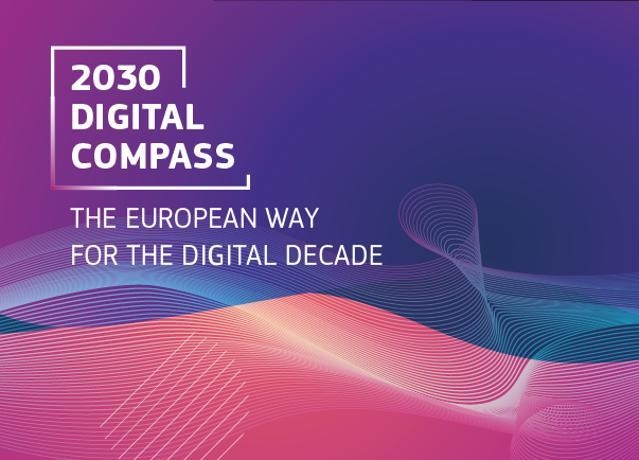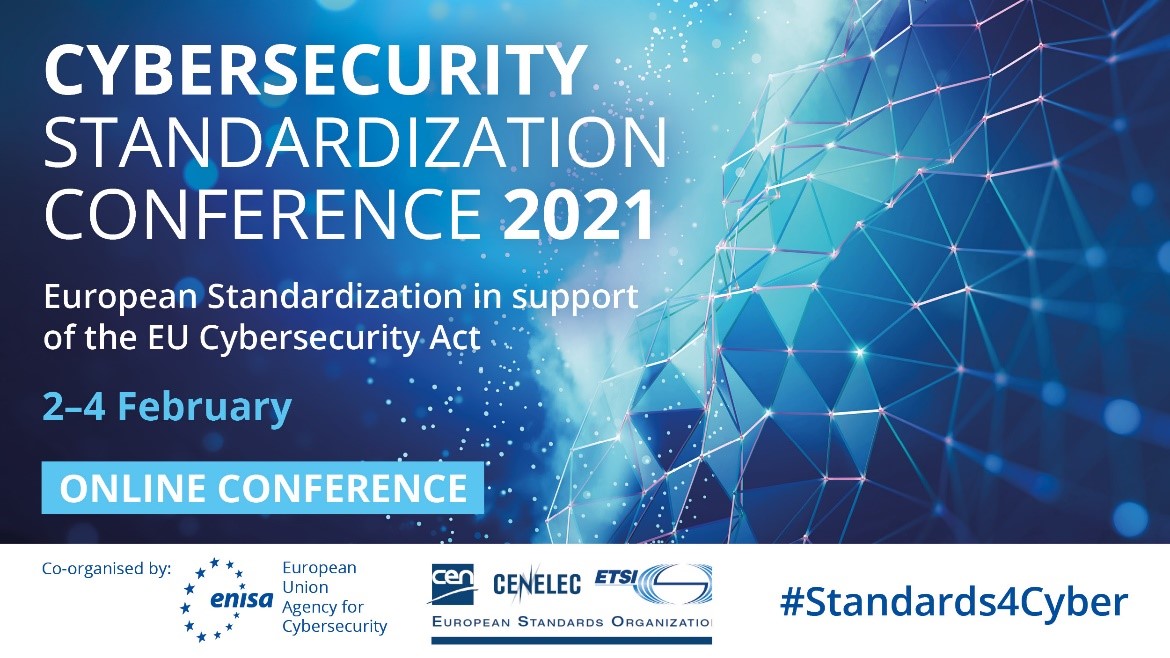The European Commission presents a vision, targets and avenues for a successful digital transformation of Europe by 2030. This is also critical to achieve the transition towards a climate neutral, circular and resilient economy. The EU's ambition is to be digitally sovereign in an open and interconnected world, and to pursue digital policies that empower people and businesses to seize a human centred, sustainable and more prosperous digital future. This includes addressing vulnerabilities and dependencies as well as accelerating investment.
To make the next years Europe's ‘Digital Decade'; responds to the European Council's call for a ‘Digital Compass'; and builds on the Commission's digital strategy of February 2020. The Communication proposes to agree on a set of digital principles, to rapidly launch important multi-country projects, and to prepare a legislative proposal setting out a robust governance framework, to monitor progress – the Digital Compass.
Europe's Digital Compass: The Commission proposes a Digital Compass to translate the EU?s digital ambitions for 2030 into concrete terms. They evolve around four cardinal points:
- Digitally skilled citizens and highly skilled digital professionals: By 2030, at least 80% of all adults should have basic digital skills, and there should be 20 million employed ICT.
- Secure, performant and sustainable digital infrastructures: By 2030, all EU households should have gigabit connectivity and all populated areas should be covered by 5G.
- Digital transformation of businesses: By 2030, three out of four companies should use cloud computing services, big data, and Artificial Intelligence.
- Digitalization of public services: By 2030, all key public services should be available online; all citizens will have access to their e-medical records; and 80% citizens should use an eID solution.
ETSI Launches New Group on IPV6 Enhanced Innovation
In the 5G and cloud era, IPv6 will grow rapidly. Strengthening new generation IP network technologies based on IPv6 and its innovative technologies has become the common direction of the IP industry. To tackle the increasing Industry needs for IPv6 adoption in multiple Use Cases and Scenarios, ETSI has recently launched ISG IPv6 Enhanced innovation (IPE). IPE aims to drive full connectivity of IPv6 on everything and facilitate the business success of this technology. IPE members include 43 organizations to date, comprising carriers, vendors, and academia, working together to improve the industry ecosystem and accelerate innovation.
The group will first analyse the current landscape of existing IPv6 standards deployed on prime technologies such as 5G, IoT and Cloud Computing to identify gaps and thus accelerate IPv6-based innovations. Two other reports will cover data centre and Cloud use cases on one hand and 5G Transport use cases on the other hand. The last pieces of work will define Industrial IoT/enterprise requirements and IPv6 only transition requirements across new and evolving technology domains and areas.
ETSI announced a new specification, ETSI TS 103 523-2: Transport Layer MSP (TLMSP), Part 2 of the Middlebox Security Protocol (MSP) series, which defines a protocol for varied (fine-grained) access control to communications traffic. This specification was developed by the ETSI Technical Committee CYBER. Middleboxes are vital in modern networks - from new 5G deployments, with ever-faster networks that need performance management, to resisting new cyberattacks with evolved threat defence that copes with encrypted traffic, to VPN provision. Network operators, service providers, users, enterprises, and small businesses require being granted varied (fine grained) permissions.
As more datagram network traffic is encrypted, the problems for cyber defence will grow. This intrusive "break-and-inspect" method, ignoring the desire for explicit authorization by endpoints, raises questions around security, privacy, and trust. ETSI TS 103 523-2, MSP Part 2 addresses this gap by specifying a protocol that allows fine-grained access and nuanced permissions for different portions of traffic, allowing middleboxes to perform their functions securely whilst keeping up with the rapid pace of technical development.
The European Standards Organizations, CEN, CENELEC and ETSI, joined forces with ENISA, the European Union Agency for Cybersecurity, to organize its annual conference virtually this year. The event, which took place from 2 to 4 February, attracted over 2000 participants from the EU and from around the world. The conference addressed standardization in relation to the Radio Equipment Directive (RED) and certification under the provisions of the Cybersecurity Act (CSA). The ultimate objective of the exercise is to enable an effective implementation of the Cybersecurity Act. The objectives of the presentations and key topics addressed by the conference panels were the following:
- Cybersecurity requirements and standardization activities under the scope of the Radio Equipment Directive
- Standardization supporting the Cybersecurity Act
- Developments on standardization in the area of Consumer IoT
- Standardization of 5G
The slides presented during the conference are available on the website of the Cybersecurity Standardization Conference.









